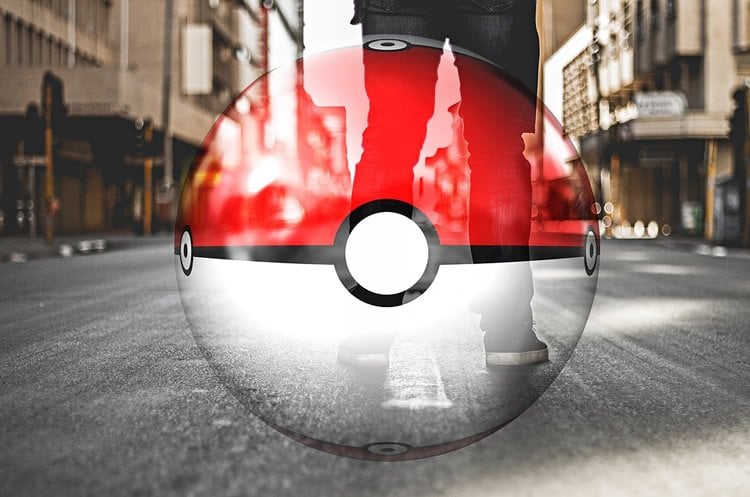Summary: From Pokemon Go to wildlife photography and birdwatching, a new study reports many humans have an innate interest in finding and catching prey.
Source: University of Tennessee.
Interested in birding or wildlife photography? Enjoy playing Pokemon Go and catching imaginary creatures? If so, you may simply be expressing your inner hunter.
So says a new study from Vladimir Dinets, a University of Tennessee, Knoxville, research assistant professor of psychology. Dinets used himself as a case study to demonstrate that at least some humans do have a hunting instinct—or, more precisely, an innate interest in finding and catching prey.
“To prove such a theory, you don’t need a large sample size; you need just one well-documented case,” he said of the unconventional method.
The study was published recently in the open-access journal Humanimalia.
Hunting has played a major role in human history, helping humans survive and populate the world. But do we have an inherited hunting instinct, like dogs, cats and other predators?
“It is possible that we all have the hunting instinct, but it has never been proven,” Dinets said.
To probe this question, Dinets looked to his own childhood. His father, Leonid Kaabak, a chemist, has had a lifelong hobby of chasing, catching and studying rare butterflies. Yet after his parents divorced, Dinets grew up in a family where no one had an interest in wild animals or the natural world. From the age of 3, however, Dinets has shown an interest in wildlife. By the time he was 5, he would spend every summer combing suburban forests for animals of all kinds, from insects to mammals. This passion was so intense that he kept “hunting” during the rest of the year, when he moved to the central part of Moscow, a city of 10 million people. He would spend a lot of time looking for birds in city parks and, weather permitting, for beetles and worms in vacant lots and lawns.
In his searches, he noted that he instinctively used certain patterns known to tribal hunters worldwide. By age 12, he had switched from simply chasing animals to observing them, and began a seven-year study of the European mink, a rare and endangered mammal, that was later published in a scientific journal. He eventually earned a doctorate in zoology and now specializes in studying animal behavior. He still enjoys finding rare species and often travels to remote parts of the world to search for them. He is the author of the Peterson Field Guide to Finding Mammals in North America.
“The recent explosive popularity of the Pokemon Go game, which allows players to hunt for virtual animals across a real terrain, shows how addictive such proxies can be and how many people can enjoy hunting-like behavior despite being city dwellers completely isolated from natural environments,” Dinets said. “The take-home message of the study is that we have predatory instincts and have to be aware of them. But this doesn’t mean that we have to be real predators; instead, we can follow these instincts in more intelligent ways.”
Dinets noted that conducting studies on oneself has been important in the history of science, most famously with infectious disease research.
“Nowadays people mostly use it to avoid going through complex permit applications and legal issues with studies on human subjects,” he said.

Dinets would like to further the research by conducting a study to see if identical twins are more similar in their hunting behavior than nonidentical twins.
“If this is the case, it would provide much stronger evidence that hunting instinct is innate,” he said. “I’m looking for collaborators with experience in anthropological research.”
Source: Lola Alapo – University of Tennessee
Image Source: This NeuroscienceNews.com image is in the public domain.
Original Research: Full open access research for “Spontaneous Development of Hunting-like Behavior in a Juvenile Human: A Case Study” by Vladimir Dinets in Humanimalia. Published online September 2016 doi:not available
[cbtabs][cbtab title=”MLA”]University of Tennessee. “From Pokemon Go to Birdwatching: How We Express Our Inner Hunter.” NeuroscienceNews. NeuroscienceNews, 1 October 2016.
<https://neurosciencenews.com/psychology-pokemon-go-hunter-5176/>.[/cbtab][cbtab title=”APA”]University of Tennessee. (2016, October 1). From Pokemon Go to Birdwatching: How We Express Our Inner Hunter. NeuroscienceNews. Retrieved October 1, 2016 from https://neurosciencenews.com/psychology-pokemon-go-hunter-5176/[/cbtab][cbtab title=”Chicago”]University of Tennessee. “From Pokemon Go to Birdwatching: How We Express Our Inner Hunter.” https://neurosciencenews.com/psychology-pokemon-go-hunter-5176/ (accessed October 1, 2016).[/cbtab][/cbtabs]
Abstract
Spontaneous Development of Hunting-like Behavior in a Juvenile Human: A Case Study
Studies of hunting behavior in humans have never addressed the roles of innate predisposition vs. cultural acquisition in its development. I present a case study showing that many elements of hunting behavior can develop spontaneously in a juvenile growing up in complete isolation from other hunters, in an environment where such behavior has no adaptive value. Despite the minimal sample size and the fact that the study subject differed in behavior from most other juvenile males growing up at that time in the same environment, these observations clearly demonstrate that hunting-like behavior can be manifested without learning from others, at least in some individuals.
“Spontaneous Development of Hunting-like Behavior in a Juvenile Human: A Case Study” by Vladimir Dinets in Humanimalia. Published online September 2016 doi:not available






